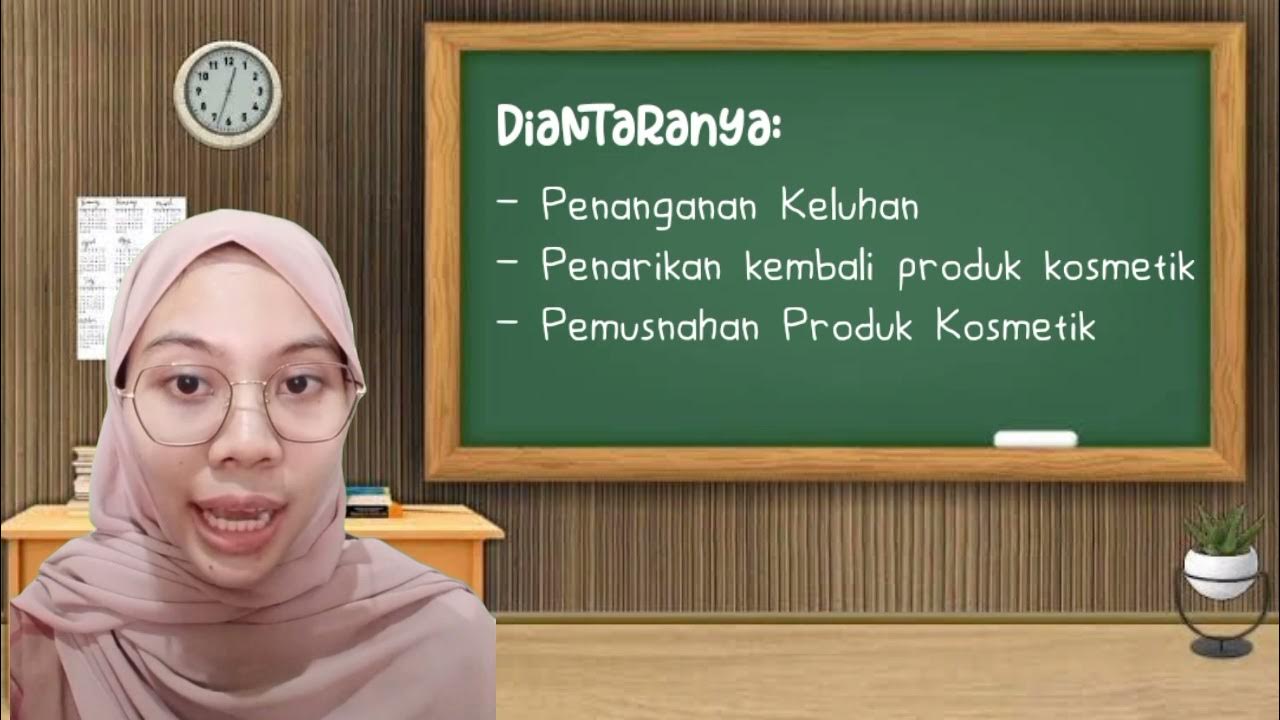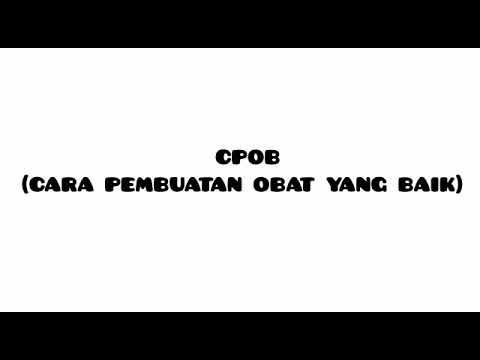Pertemuan 6 CPOTB (Cara Pembuatan Obat Tradisional yang Baik)
Summary
TLDRIn this lecture, the speaker discusses the principles of CPOTB (Good Traditional Medicine Manufacturing Practice) in producing safe and effective traditional medicine. The focus is on ten key aspects: general requirements, personnel, building conditions, equipment, sanitation, licensing, production, packaging, quality control, and product monitoring. Special emphasis is placed on the role of pharmacists, the importance of cleanliness, and regular inspections to ensure quality. The speaker also highlights the necessity for thorough documentation and safety protocols in case of product-related issues. The session concludes with a call for students to apply these principles in their future work.
Takeaways
- 😀 CPOTB (Good Manufacturing Practice for Traditional Medicine) ensures that traditional medicines are safe, effective, and of high quality.
- 😀 CPOTB covers 10 key points, including general provisions, personnel, buildings, equipment, sanitation, licensing, processing and packaging, quality control, self-inspection, and documentation.
- 😀 Traditional medicine must meet specific standards to ensure safety, health benefits, and quality. Control over raw materials, procedures, and personnel is essential.
- 😀 Personnel involved in CPOTB must be physically and mentally healthy, possess the necessary skills, and show high awareness of CPOTB compliance.
- 😀 Pharmacists play a critical role as technical managers, responsible for preparing and supervising production procedures and ensuring product safety and quality.
- 😀 The building where traditional medicine is produced should be free from pollution, meet hygiene and sanitation standards, and be designed according to the production needs.
- 😀 Equipment used in the production process must not compromise the safety or quality of the medicine, and it should be easy to clean and maintain.
- 😀 Every aspect of the production process, from personnel to packaging, must meet health standards to prevent contamination and ensure product quality.
- 😀 Proper documentation is crucial for tracking production processes and ensuring traceability of every batch produced. This also helps in case of quality issues or complaints.
- 😀 In case of consumer complaints or product issues, the affected traditional medicine must be recalled and destroyed to maintain public safety and trust.
Q & A
What is the main focus of CPOTB?
-CPOTB, which stands for 'Cara Pembuatan Obat Tradisional yang Baik,' focuses on the good manufacturing practices for traditional medicines, ensuring that they are safe, effective, and of high quality.
How does CPOTB differ from CPOB?
-The key difference is that CPOTB applies to traditional medicines, while CPOB applies to pharmaceuticals in general. Both sets of guidelines ensure the quality and safety of the products, but they are focused on different categories of medicines.
What are the 10 key points of CPOTB?
-The 10 key points of CPOTB are: 1) General Provisions, 2) Personnel, 3) Buildings, 4) Equipment, 5) Sanitation, 6) Licensing, 7) Processing and Packaging, 8) Quality Control, 9) Self-Inspection, and 10) Documentation and Traceability.
What requirements are there for personnel in CPOTB?
-Personnel must be physically and mentally healthy, possess the relevant skills and knowledge, and demonstrate high awareness and responsibility for implementing CPOTB practices.
Who is responsible for overseeing CPOTB in the production of traditional medicines?
-The pharmacist is responsible for overseeing the CPOTB process, including preparing procedures, ensuring correct execution, and monitoring the safety and quality of the traditional medicines produced.
What are the requirements for the production facility under CPOTB?
-The facility should be free of contamination, located in an area that does not harm the environment, meet hygiene and sanitation standards, and have sufficient space and equipment for the production of traditional medicines.
What specifications must equipment meet according to CPOTB?
-Equipment must be made from materials that do not affect the safety or quality of the product, designed to ensure uniformity and safety, and easy to clean and maintain. The size and capacity of the equipment must align with the production scale.
Why is sanitation important in CPOTB?
-Sanitation is crucial to prevent contamination at all stages of production. This includes personnel hygiene, cleanliness of the building and equipment, and ensuring that all materials, processes, and packaging comply with health standards.
What is the role of quality control in CPOTB?
-Quality control involves ongoing monitoring of materials, processes, and the final product to ensure they meet the required standards. This includes inspecting raw materials, packaging, and the production process to prevent defects.
How should issues in the production of traditional medicine be handled under CPOTB?
-Any issues, such as complaints or safety concerns, should be investigated immediately. The documentation system allows traceability of products, making it easier to identify the source of any problems, and products that are found to be unsafe should be recalled and destroyed.
Outlines

此内容仅限付费用户访问。 请升级后访问。
立即升级Mindmap

此内容仅限付费用户访问。 请升级后访问。
立即升级Keywords

此内容仅限付费用户访问。 请升级后访问。
立即升级Highlights

此内容仅限付费用户访问。 请升级后访问。
立即升级Transcripts

此内容仅限付费用户访问。 请升级后访问。
立即升级5.0 / 5 (0 votes)






